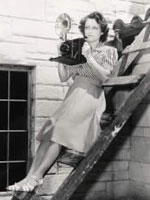Barrington Living History Farm [TX]
Last president of the Republic of Texas Anson Jones farmed near Washington during and after his presidency. Jones named his farm "Barrington" after his Massachusetts home, Great Barrington. There he lived with wife Mary, their four children, his sister, sister-in-law, and five slaves. The family home, two slave cabins, a kitchen building, smokehouse, cotton house, and barn made up Barrington Farm. With Jones's daybook as their guide, the interpreters at Barrington Living History Farm conduct themselves much as did the earliest residents of the original farmstead. The Jones home is original; the outbuildings are replicas constructed by Texas Parks and Wildlife using Jones's own journal and drawings. Visitors to the farm can experience the sights, smells, and sounds of the 19th century. The scene is complete with heritage breeds of livestock. Interpreters, dressed in period style clothing, help visitors better understand what life was like 150 years ago. Visitors can participate in the work of the farm and become a part of the exhibit.
The farm offers demonstrations, tours, classes, educational programs, and occasional recreational and educational events (including living history events).

